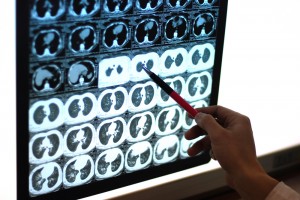 In a recent study published in the New England Journal of Medicine, titled “Cost-Effectiveness of CT Screening in the National Lung Screening Trial”, a group of researchers from the Geisel School of Medicine, Dartmouth, have concluded that lung cancer screening in the National Lung Screening Trial (NLST) meets the standards for cost effectiveness.
In a recent study published in the New England Journal of Medicine, titled “Cost-Effectiveness of CT Screening in the National Lung Screening Trial”, a group of researchers from the Geisel School of Medicine, Dartmouth, have concluded that lung cancer screening in the National Lung Screening Trial (NLST) meets the standards for cost effectiveness.
This type of screening test allows annual low-dose CT scans to detect lung tumors at an early stage in patients that are considered to be at high risk of developing the disease.
“The takeaway from this study is that there is potential for lung cancer screening to be done in a cost-effective manner, particularly for adults 65-75 years of age,” said study first author William C. Black, MD, in a press release.
The results from this study revealed that screening costs $81,000 for each quality-adjusted year of life it produces. This type of calculation, called Cost per Quality-Adjusted-Life-Years (QALYs), takes into account the total costs of a medical procedure in a specific population to generate one year of perfect health.
According to the researchers, an acceptable standard for cost-effectiveness is $100,000-$150,000 QALY.
“I think the vast majority of health economists would consider the threshold to be close to $100,000 per QALY,” said Dr. Black.
Of the various population groups the team studied, lung cancer screening was most cost-effective in current smokers, women, and people in the 60 year age group.
“Although precision with subsets is not as good as overall, people at higher risk seemed to benefit more from screening, so, for example, current smokers benefited much more than people who had quit,” added Dr. Black.
The study assessed over 53,000 participants in the seven-year NLST, revealing that for every 1,000 people screened, 3 deaths derived from lung cancer could be avoided.
However, lung cancer screening has some implicated risks, such as positive false alarms, that will necessarily require further screenings.
“The new American College of Radiology LungRADs reporting system should reduce the false positive rate by about 50 percent, and reduce the cost-effectiveness ratio by several thousand dollars per QALY gained”, added Dr. Black.

